106 years ago today, Xuan Hua, also known by the dharma name An Tzu, was born. Xuan Hua founded The Dharma Realm Buddhist Association, and the City of Ten Thousand Buddhas in Ukiah, California, bringing Chan Buddhism and the fully ordained monastic order to the West. He also founded the Dharma Realm Buddhist University at CTTB, and the Buddhist Text Translation Society which works to translate Buddhist scriptures from Chinese into English, Vietnamese, Spanish, and many other languages. READ about his long efforts in the West… (1918)
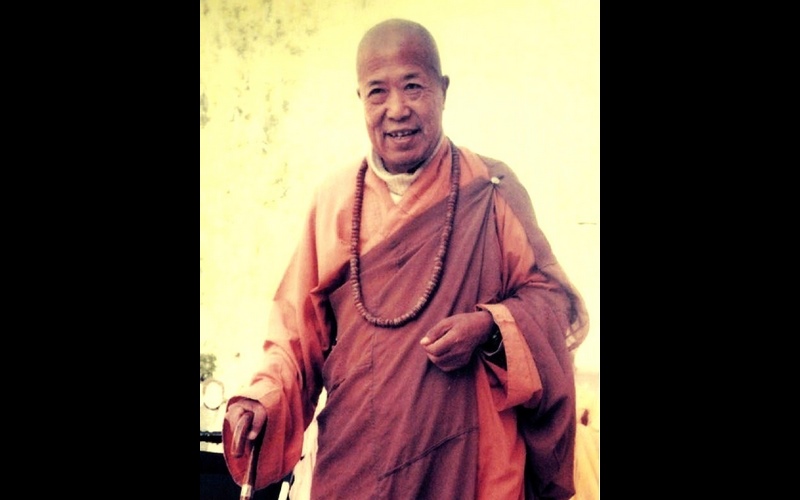
Born in the frigid northern county and city of Harbin, Xuan Hua became a monk at age 19, but it was many years later in 1961 when Tzu first received an invitation to visit America. He arrived in San Francisco and began to attract young Americans who were interested in meditation at his newly built lecture hall.
Eventually, 1968, Xuan Hua held an open teaching and practice session on the Shurangama Sutra, after which 5 students requested permission to take full ordainment and live as monks at the monastery and form the first Sangha under Xuan Hua’s school. In 1972, he decided to hold ordination ceremonies at Gold Mountain Dhyana Monastery during which 3 people were fully ordained under him, which would grow eventually to 200 by the time he left his body behind.
He was particularly friendly to the South Asian tradition of Theravada Buddhism, and donated a major piece of the land that would become Abhayagiri Buddhist Monastery, a Theravada Buddhist monastery in the Thai Forest tradition of Ajahn Chah, located in Redwood Valley, California.
From July 18th to the 24th of 1987, Xuan Hua held a centuries-old Buddhist ritual in California and invited over seventy Buddhists from mainland China to attend. This was the first time the service was known to have been held in North America.
MORE Good News on this Date:
- Charlie Chaplin was born in London, the first moviemaker to take complete control over his films, as the actor, writer, and director (1889)
- Boston Arena, the oldest existing indoor ice hockey arena still used for the sport in the 21st century, now called Matthews Arena and considered a spectator’s dream venue, opened for the first time (1910)
- Walter Cronkite first anchored the CBS Evening News broadcast; later he became “the most trusted man in America”, turning public opinion against U.S. aggression in Viet Nam (1962)
- Bob Dylan debuted his song Blowin’ in the Wind on stage at Gerde’s Folk City in New York, and added a third middle verse later (1962)
- Dr. Martin Luther King, Jr. penned his famous Letter from the Birmingham Jail while incarcerated in Alabama for protesting against segregation., saying, “injustice anywhere is a threat to justice everywhere” (1963)
- The Rolling Stones released their debut album, The Rolling Stones, it was issued in the US as England’s Newest Hit Makers (1964)
- The Treaty of Accession is signed in Athens admitting 10 new member states to the European Union (2003)
- A Russian billionaire, Elena Baturina, said to be the richest woman, invested $100 million in BeOpenFuture.com, a creative think-tank devoted to improving the world (2012)
116 years ago today, Natural Bridges National Monument was established by Teddy Roosevelt, protecting a series of bridges in the Utah desert formed naturally by floodwaters. The three bridges in the park are named Kachina, Owachomo, and Sipapu (the largest), which are all Hopi names, and are truly among the most stunning natural objects in the US.
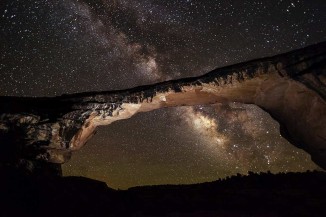
Unlike some other National Monuments created by Roosevelt, this one conserved mostly the three arches and a few thousand acres surrounding them which feature the remains of ancient Pueblo cultures. Natural Bridges contains the darkest night sky ever measured by the National Park Service, and so looking up at the bridges is only half the experience of the park, with the near-virgin starscape at night being the other.
In the canyons, where there is more water and seasonal streams, riparian desert plants, such as willow, oak, and cottonwood trees, thrive. Because the Monument has been closed to grazing for nearly a century, and off-road motorized travel is restricted, Natural Bridges contains extensive areas of undisturbed, mature cryptobiotic soils.
Cryptobiotic soils take years to develop, but despite their near-inanimate existence, they prevent as much as half the world’s sand from blowing away into the oceans. (1908)
52 years ago today, crates containing a pair of giant pandas arrived at the National Zoo in Washington, DC, sent from China for the education and inspiration of the American people. Ling-Ling (female) and Hsing-Hsing (male), were the first giant pandas ever seen at a zoo in the US, and they delighted visitors and television crews, who would run annual stories about every development in their lives.
At dinner in Beijing, China, in February 1972, First Lady Patricia Nixon mentioned her fondness for giant pandas to Chinese Premier Zhou Enlai. As a gesture of goodwill following President Nixon’s seminal state visit, Premier Enlai replied “I will give you some.”
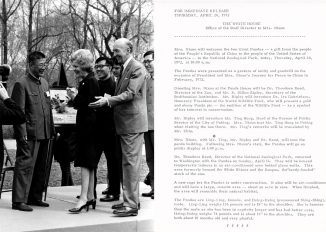
As emblematic of China as the dumpling, the Great Wall, or Karst rock, the early Communists realized the value of giant pandas in international relations, and “panda diplomacy,” began in earnest in the 1960s. Between 1957 and 1969, 69 pandas were gifted to 69 nations as gestures of friendship, including, Korea, the UK, and the Soviet Union. Many of these giant pandas were the only ones that had ever been seen in these countries, and perhaps no animal benefitted more from diffusion of research about the most finicky of animals when bred in captivity.
Over decades of joint efforts between the Smithsonian Zoo and Chinese partners, the zoo’s breeding, veterinary, and ecological research has provided critical data for the management of giant pandas in human care and valuable insights for the conservation of wild populations. (1972)
103 years ago today, Peter Ustinov, the iconic actor, writer, filmmaker, and diplomat was born in London (just barely because his Russian parents had just arrived there).
He won plenty of awards, including two Academy Awards for Supporting Actor (in Spartacus and Topkapi, and a nomination for Quo Vadis); 3 Emmys (Omnibus: The Life of Samuel Johnson, Barefoot in Athens, and A Storm in Summer); and a Grammy for Best Recording for Children (as narrator of Prokofiev: Peter and the Wolf with the Philharmonia Orchestra).
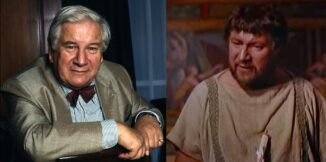
An avid intellectual who spoke many languages, he held various academic posts and served as a goodwill ambassador for UNICEF for over 30 years. He raised money and visited some of the world’s most disadvantaged children—always making them laugh.
A novelist and screenwriter, he was knighted by the Queen, and Durham University changed the name of its Graduate Society to Ustinov College in honor of the significant contributions Ustinov had made as chancellor of the institution from 1992 until his death 12 years later at age 82.
You might remember his appearances (mimicking a variety of accents expertly) on The Muppet Show, or in the 70s and 80s, when he played Agatha Christie’s detective Hercule Poirot in half a dozen films.
In his autobiography, Dear Me, he described his life while being interrogated by his own ego, with forays into philosophy, theatre, fame, and self-realization. WATCH him speak in that eloquent voice on happiness, life lessons, perfection, and baby talk… (1921)
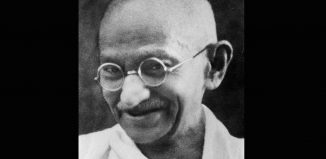
And, 105 years ago today, Mahatma Gandhi organized a day of prayer and fasting in response to the massacre of hundreds of defenseless Indian protesters by the British in the Jallianwalla Bagh public garden. The tragedy caused many moderate Indians to abandon their loyalty to the British and become nationalists. It fueled the Non-cooperation Movement of 1920–22, directed by Gandhi, involving hundreds of thousands of Indians in non-violent protest and support of local goods and services. (1919)
Of the thousands of opening-day baseball games in MLB history, only once has a pitcher allowed zero hits from opposing batters from start to finish. In 2021, Bob Feller’s world record was safe for another year. In the last 84 years of Major League Baseball, no one has broken this pitcher’s record of throwing the only opening-day no-hitter in the history of the game.
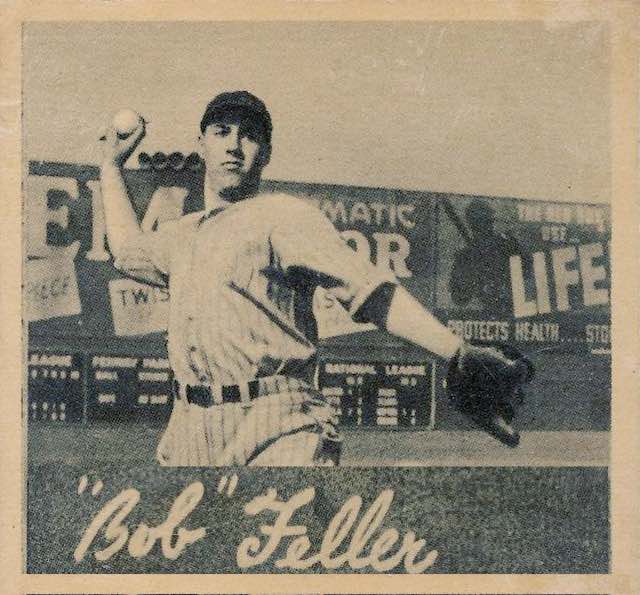
During that year, Bob Feller went on to accomplish a pitching triple crown for the Cleveland Indians, leading the American League in ERA (2.61), wins (27) and strikeouts (261)—the latter two led the entire majors. During his career, the phenom threw two more no-hitters and tallied 12 one-hitters.
Feller was ranked 36th on the Sporting News list of the 100 Greatest Baseball Players of all time. Of his death in 2010 at the age of 92, Mike Hegan, Indians broadcaster and son of former Feller teammate Jim Hegan, stated, “The Indians of the 40s and 50s were the face of the city of Cleveland, and Bob Feller was the face of the Indians.” Interrupted only by four years of military service in World War II, Feller played for the team for 18 years and remained loyal to the city for seven decades. (1940)
SHARE the Milestones, Memories, and Music…



















